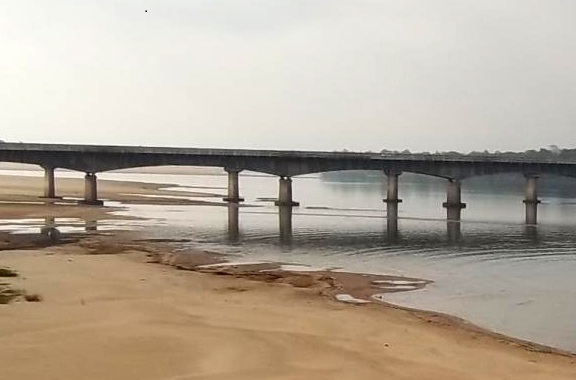Cuttack: A new novel entwines the tale of the river Mahanadi with the people living on its banks through vignettes of their dynamic lives that are infused with myths, legends and archaeological anecdotes.
Characters like Malati Gond, Neelkantha, Kuber, Bhanu Shitulia, Parvati and others may have never met each other but the story of their lives will remain strung together by the common thread of the ever-flowing Mahanadi.
“Mahanadi: The Tale of a River”, written by Anita Agnihotri in Bengali and translated into English by Nivedita Sen, is published by Niyogi Books to coincide with World Rivers Day, which is celebrated every year on the fourth Sunday of September to raise awareness about rivers and to conserve them.
Mahanadi emerges from the plateau of Chhattisgarh and travels through forests, highlands, gorges and the alluvial plains of Odisha to meet the Bay of Bengal near the port of Paradip. For centuries, villages settled on its banks have survived on Mahanadi water for cultivation, weaving, dyeing and pottery, fishing and boating on it.
This novel also sheds light on some of the least developed, poverty-stricken regions of Chhattisgarh and Odisha whose inhabitants struggle to make ends meet. The characters and the landscape keep changing with the winding course of the mighty river. The river plays the dual role of backdrop and central character.
Within the framework of such a unique setting, Agnihotri explores the struggles in the lives of marginalised communities that are oppressed by underhand politics, social privilege and economic disparity.
Among the characters is Kuber, who sets out on a journey to find his mother’s long-lost friend, only to realise about the horrors inflicted by building of the Hirakud dam across the Mahanadi.
Then there is the city-bred, urbane Sumana who experiences an epiphany when she visits the primeval Satkosia gorge wildlife sanctuary on the Mahanadi.
Indranath waits at the Mahanadi’s ghat during Balijatra for his beloved who will finally set him free.
An exceptionally talented weaver, Upamanyu devotes six years of his life to an epic work of art only to realise that he cannot sell it, nor can he go back to the way his life used to be.
And what can ordinary folks like Shyam and Parvati possibly do when faced with the construction of a big steel plant and a private port that threaten the fragile ecosystem of the Mahanadi?
Almost all the stories are set in the rural interiors or coastal areas with the Mahanadi acting as the backdrop.
Mahanadi also penetrates the seamless interface of Adivasi traditions, tantric practices, Buddhist rituals and Hindu superstitions. The author reinvents Asavari, the protagonist of one of the stories in the novel, as the legendary tigress-goddess Bauri Thakurani, known for zealously guarding her young.
Though there is pain, hardship, misery, sorrow and most of all poverty meandering through the narrative of the novel, there is also love, hope, perseverance and beauty shining through it.
PTI
